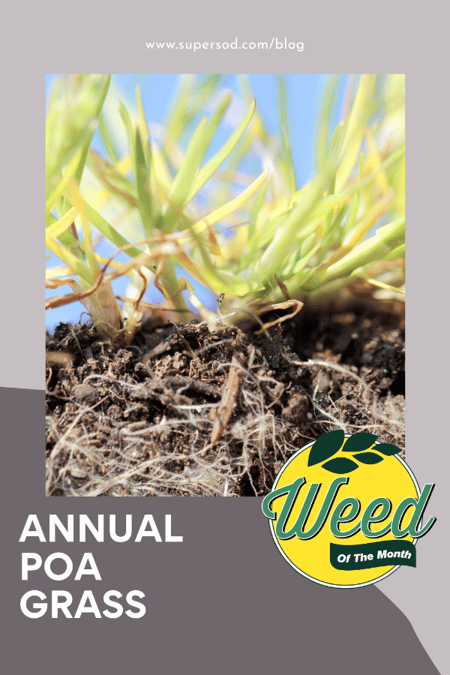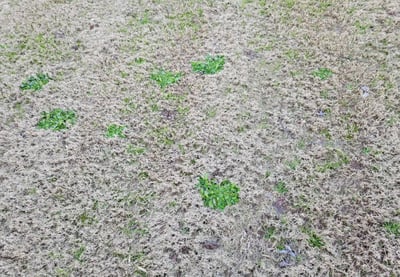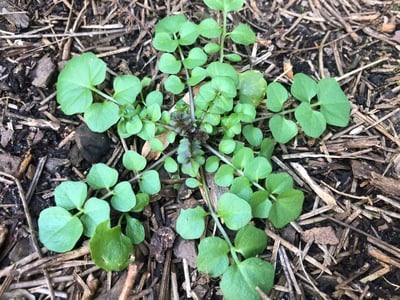
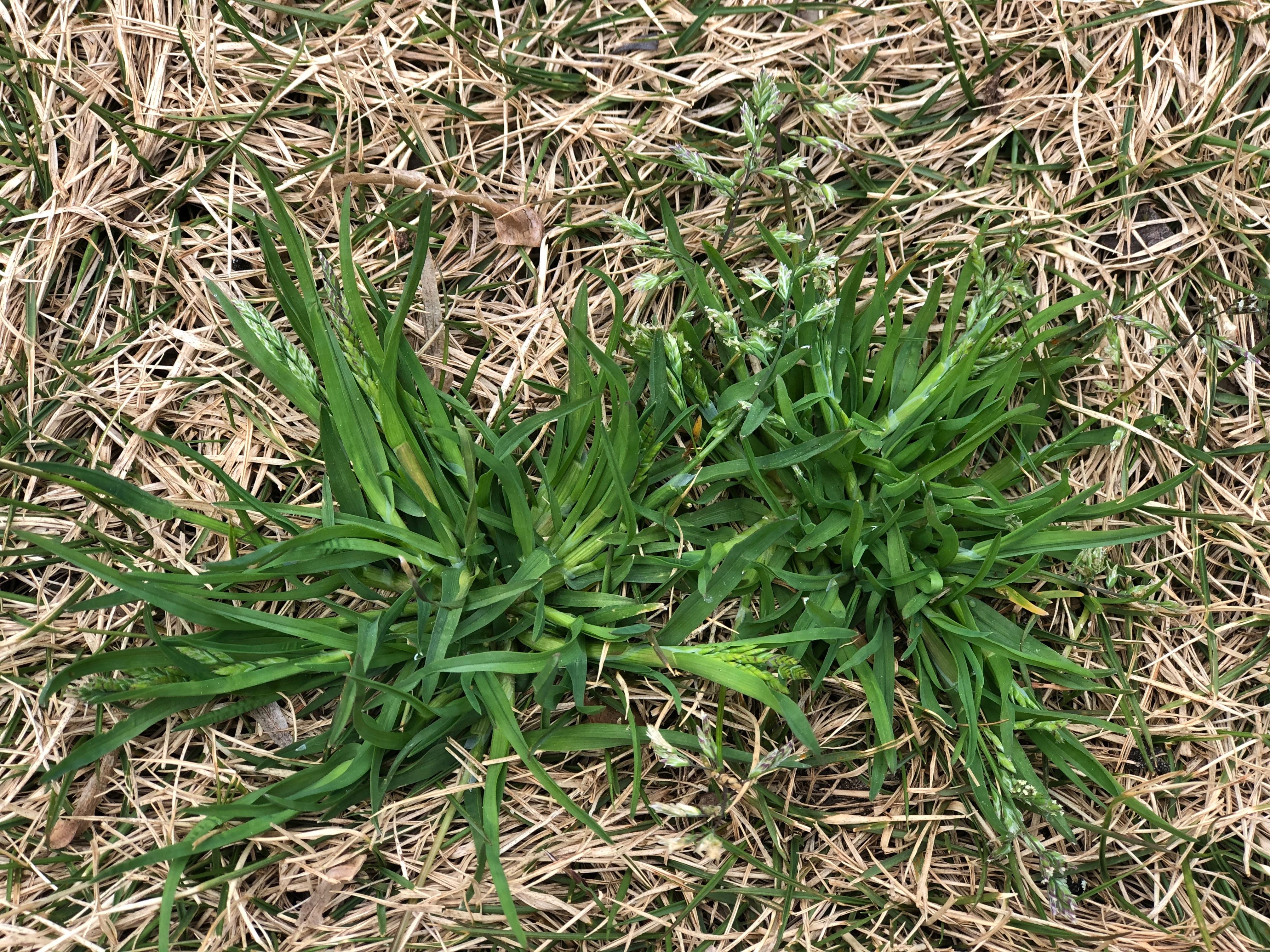
Poa annua (aka annual poa grass or annual bluegrass) is a weed in the grass family. There are many winter weeds, but this one tops our list of "most frequently asked about" for winter weed control.
Those of you with warm season lawns will be especially vexed by this winter weed because it's conspicuously bright green and actively growing when those types of lawns are dormant. It will also appear in evergreen Tall Fescue lawns, mulch beds, and gravel.
Different Types of Poa
You've heard of Kentucky bluegrass, yes? It's a common lawn in the north, but that's a different species called Poa pratensis.
For winter weed management, Poa annua and Poa trivialis are the top two Poa weeds in Super-Sod's footprint.
Annual poa ID Features:
- Family: Poacea - the grass family
- Habit: It forms short-growing clumps
- Leaves: Thin, grassy leaves that are bright green
- Flowers: The grassy flowers start green, turning white as they age
This little annual weed grows fast, has several lifecycles during winter/spring, and produces thousands of seeds. To make matters worse, it won't stop growing until heat comes in spring/summer and it is showing resistance to post-emergent herbicides. Early in the season you can stay on top of it by mowing to keep the flowers from setting seed, in this way breaking the lifecycle. It's also one of the easiest weeds to pull by hand.
Annual poa grass has one of the widest adaptations, from Arctic to tropics. As a member of the Poaceae, it's in the grass family along with all the cereal crops. I read that it's safe for livestock to eat, and that it's also technically edible to humans. However, it's not really consumed even by foraging aficionados due to the amount of work it takes to harvest the tiny seeds.
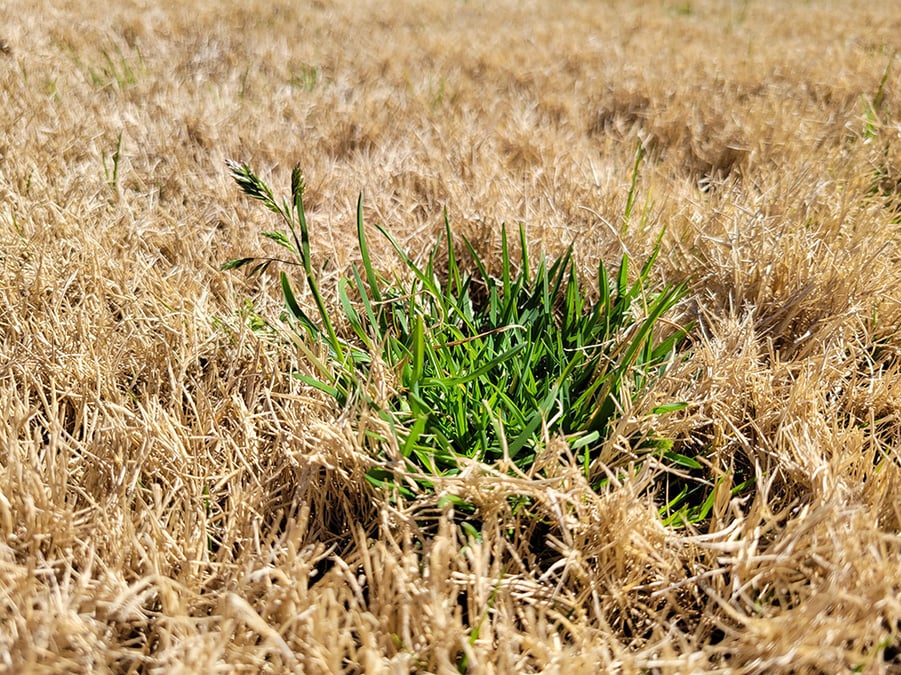
How to Get Rid of Poa annua in Warm Season Lawns
Our CEO Ben Copeland Jr. says, "Treat it or pull it; don't ignore it."
The following are his tips for annual poa weed control:
- Mowing helps, but it doesn't fix it - as the days lengthen in the spring, it starts to bolt and will go to seed at 1/2" tall, making it impossible to mow.
- Pull it! Especially bigger clumps that are in flower - just pull them by hand.
- Weed Prevention: An application of pre-emergent herbicide in September is the best control (post-emergent herbicide treatment is not very effective) because it prevents Poa annua from germinating. Come by for products or check out our new Lawn Coach subscription.
- Annual bluegrass proliferates in compacted and/or wet areas, so if you have an annual bluegrass problem, consider aerification and topdressing with compost in the spring after your lawn has greened up. This practice will reduce the problem for the next year.
- The healthier and denser your turf, the less annual bluegrass you'll have.
How to Get Rid of Poa annua in Tall Fescue Lawns
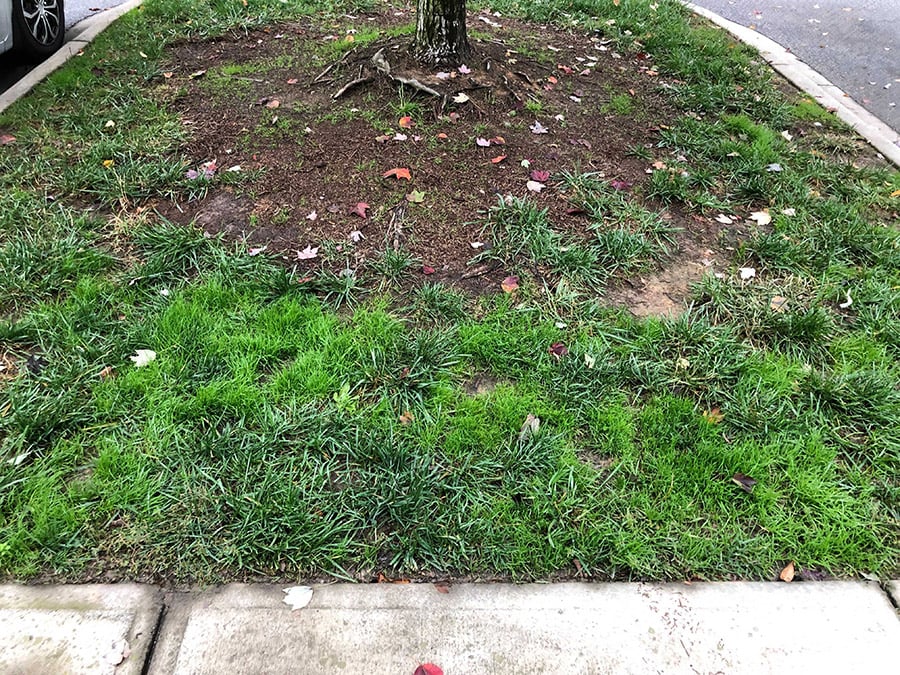
Poa annua in Tall Fescue lawns is particularly tricky to get rid of because annual poa starts germinating on its own free will at the same time people are investing time and money in reseeding their Tall Fescue lawns. Since the reseeding is going on, it's simply not safe to spread pre-emergent herbicides because that would inhibit the Tall Fescue seeds from germinating too. It's a frustrating place to find oneself.
Thankfully, there is a way to handle the infestation. Plant your Tall Fescue seeds and mow as soon as the seedlings are tall enough to mow. The mowing alone will mow off some of the annual poa flower heads and prevent them from going to seed, but as soon as you've mowed 3-4 times it's safe to apply post emergent herbicides.
Clare Lewis, Lawn Coach and Inside Sales, has this advice, “We only know of one product called Tenacity. Pre-emergent herbicides can't be applied because it will cause your seeds to not germinate, but the post-emergent herbicide Tenacity has worked well and can be used at the time of seeding without ill side effects, since it's labeled as safe for Tall Fescue* lawns. Some of our stores stock Tenacity and it is available online from several sources."
*Tenacity is labeled as safe for Tall Fescue and Centipede lawns, but it's not save for Bermuda and Zoysia lawns. Please carefully read and follow the directions on the bottle.
Poa Pulling - By Hand
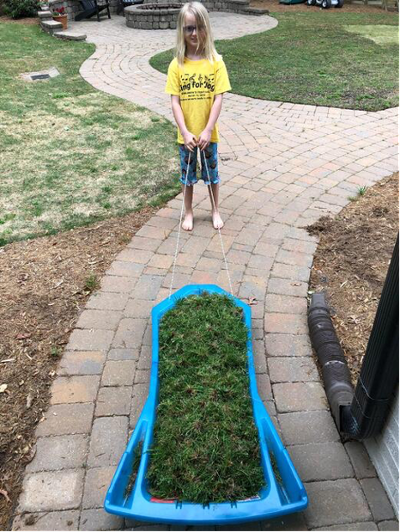
Do you believe us when we recommend pulling weeds by hand? You should! Pro Tip: Make it fun and fill a sled with hand-pulled weeds. Might as well use the sled for something.
